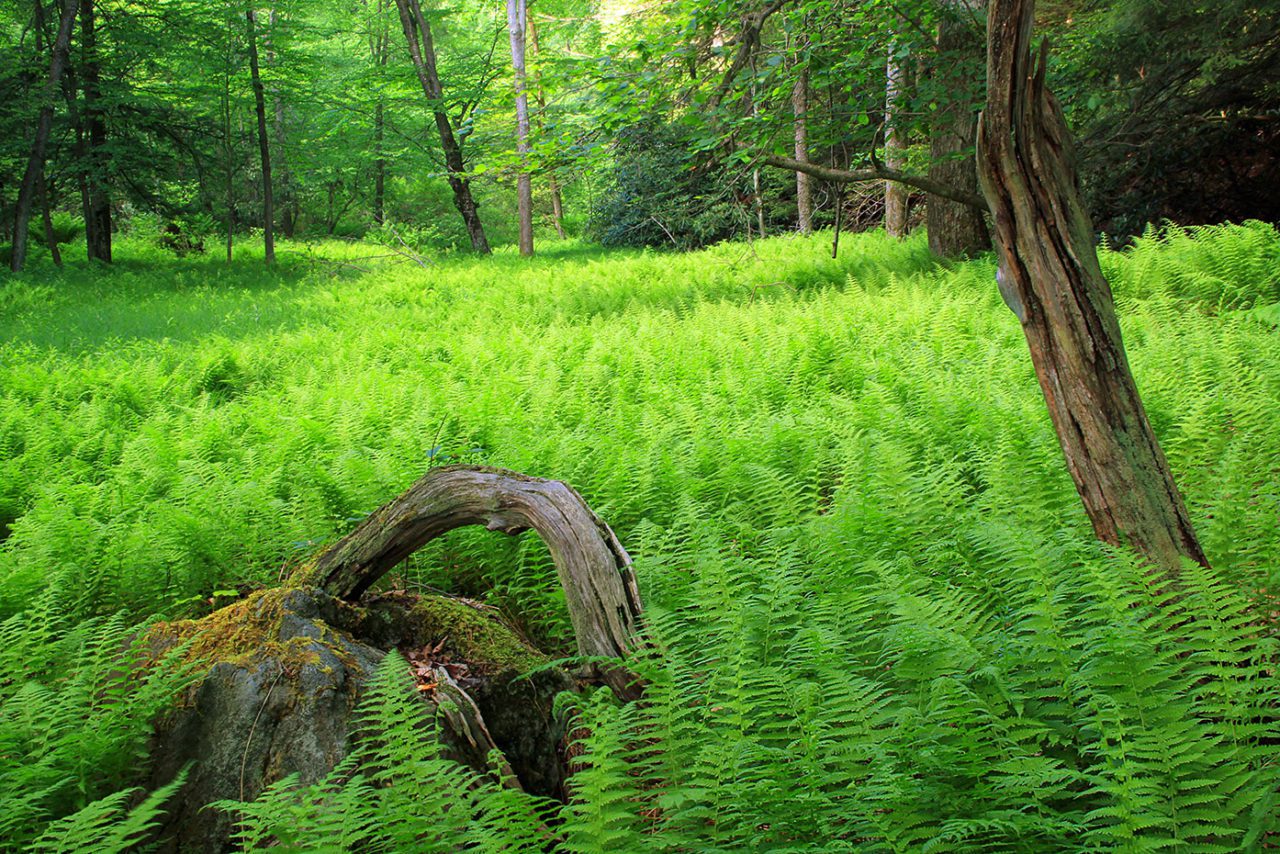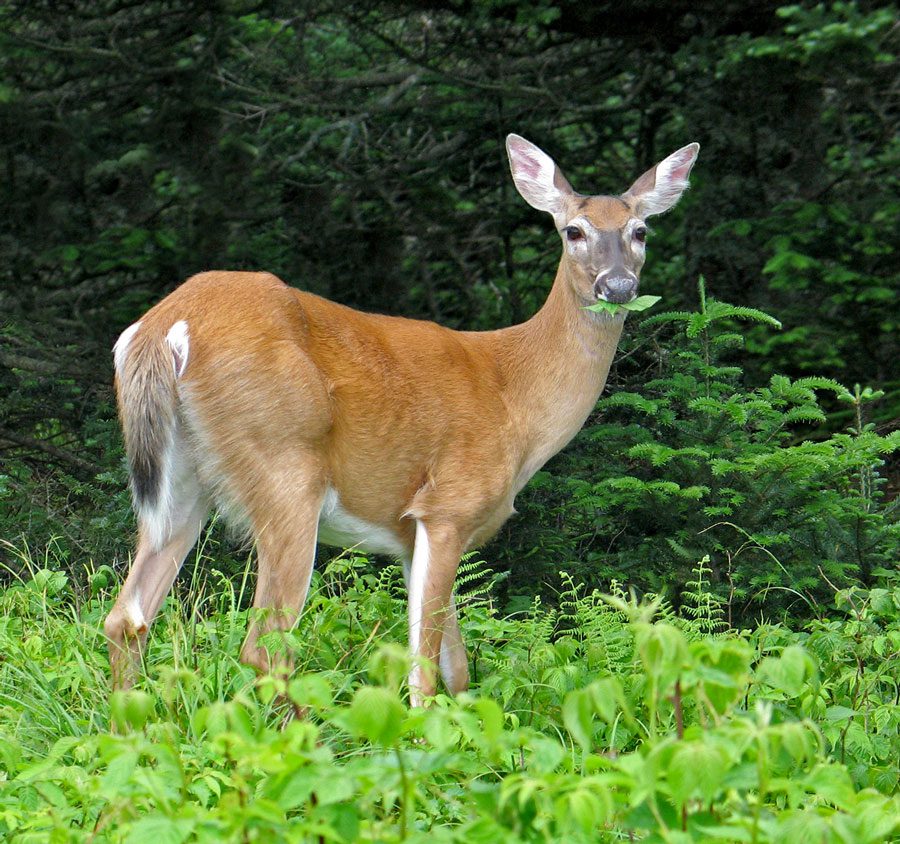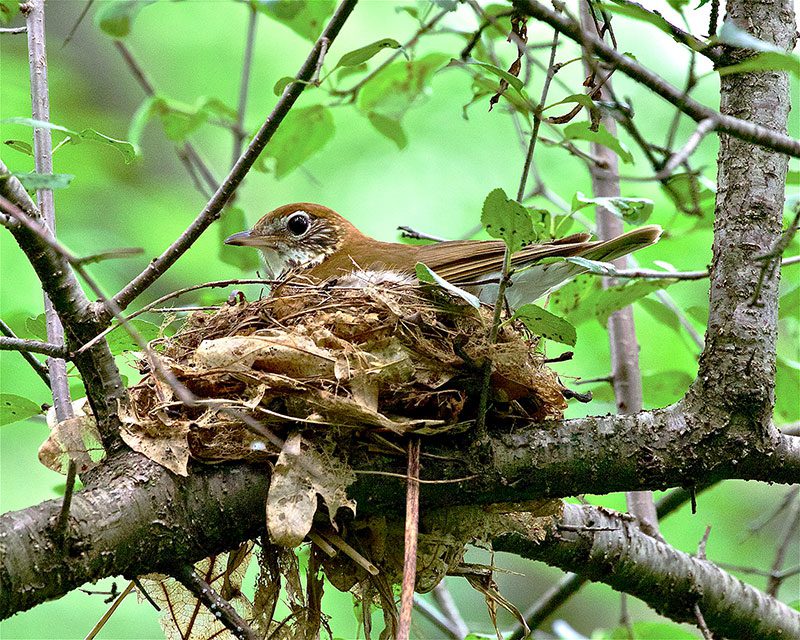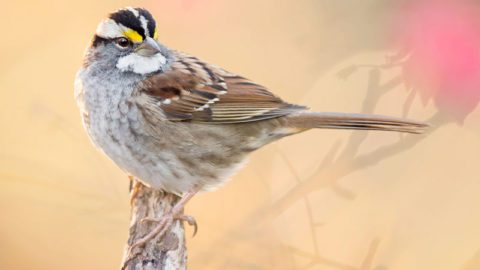Could Deer Hunting Improve Habitat for Forest Birds?
By Marc Devokaitis
September 17, 2020
From the Autumn 2020 issue of Living Bird magazine. Subscribe now.
In the late 19th century, it seemed as if deer were headed the way of the Dodo.
In 1890, the U.S. Biological Survey estimated the white-tailed deer population to be around 300,000 and falling—a sliver of the tens of millions that roamed America in the 1700s and before. But thanks to a confluence of factors including hunting regulations, fewer wolves, and forest regeneration, deer became one of the great wildlife comeback stories of the 20th century.
Since the 1980s, deer numbers in the U.S. have hovered around 30 million—a 10,000% increase in just the past century. Regionally, their density has doubled or tripled in many forested and suburban landscapes in the East. As a result, the happy story of a deer comeback has turned into a troubling tale of conflict as these traditional symbols of sylvan beauty have destroyed native plants and gardens, collided with vehicles, and transmitted diseases.
In addition to the issues they cause for human communities, deer have also reshaped forests in the eastern U.S., with consequences for entire ecosystems. Now biologists are trying to untangle how these deer-driven changes to forests are affecting bird populations, and studying how to rein in deer numbers to give forest habitats—and the birds that rely on them—a chance for a comeback of their own.

The impacts of deer on forests first caught Ron Rohrbaugh’s attention (and his ankles) when he was a grad student at Penn State in the late 1980s, working on Northern Goshawk breeding surveys in the Allegheny National Forest in northern Pennsylvania.
“I would walk for miles on these remote transects in what should have been pristine forest—far from roads and trails,” says Rohrbaugh, now director of conservation science and forest programs for Audubon Pennsylvania. “Every day, my feet would be getting constantly tangled in knee-high hay-scented fern.”
Hay-scented fern is a native plant that usually shares the forest understory with other species of ferns, shrubs, and tree saplings. But in the forests Rohrbaugh was surveying, hay-scented fern had taken over, overtopping most of the other young understory plants and creating a forest-floor monoculture.
“It was almost a park-like setting. There were no shrubs, no saplings,” says Rohrbaugh. “Hay-scented fern is one of the few native understory plants that deer won’t touch.”
The pristine look of a forest carpeted in ferns can be deceiving, says Rohrbaugh: “People perceive a natural environment, but in a situation like that, birds can’t meet their breeding-cycle needs.”
Rohrbaugh coauthored a study, published in January in Forest Ecology and Management, showing how changes in forest structure caused by swelling deer populations may be affecting birds. The research tracked populations of 40 common bird species in Pennsylvania over 35 years (from 1981 to 2015) and categorized them based on where they make their livings (such as mature forests or younger early successional forests), and whether they live primarily in the understory or canopy. Then the researchers looked at deer abundance across a corresponding timespan to see how deer populations related to trends in bird species.
Birds living in mature forests that spend most of their time in the understory—such as Hooded Warbler, Ovenbird, and Wood Thrush—fared the worst, becoming scarcer in the years following a rise in deer population.
According to Rohrbaugh, Wood Thrush is the poster bird for negative interactions between deer and forest birds, because it was among the birds in the study showing the biggest declines. Wood Thrushes most often build their nests around 2 to 3 meters (7 to 10 feet) off the ground. The lack of smaller understory trees and shrubs in deer-chewed forests means fewer places for thrushes to safely put a nest and keep it hidden from predators. A lack of diversity in the forest floor and shrub layer of the forest also corresponds to lack of insect diversity and abundance, meaning less food available for thrushes during breeding season.

While the consequences of having too many deer in the landscape are becoming clearer, it’s not clear how to solve the problem. Removing ferns across millions of acres of forest isn’t feasible. And wolves probably aren’t coming back to the eastern U.S. any time soon to tamp down deer populations.
But there may be promise in an activity as old as life itself: hunting. Bernd Blossey, a professor with the Cornell University Department of Natural Resources, has studied deer management for the past decade. He sees deer superabundance as a full-blown ecological crisis.
“The Adirondacks, Appalachia, central New England—all the major forested areas in the East have been hammered by deer,” Blossey says. And he thinks hunting may be the only way to pull deer populations back to ecologically acceptable levels.
In 2008 Blossey began a decade-long research project to compare several deer management techniques. But instead of counting deer, he planted red oak trees. Seedlings, actually—thousands of them in forests around central New York State. Blossey says red oak seedlings are a preferred food source for deer, so the red oaks are a perfect “sentinel species” for monitoring local deer populations. When populations are at reasonable levels, many red oak seedlings survive and grow. But when deer dominate the landscape, the red oaks get gobbled.
Blossey’s study, published in November 2019 in Ecology and Evolution, showed two of the strategies he tested—sterilization and regular recreational hunting—had little effect on how much damage was done to the seedlings. However, in plots where more intensive hunting was allowed, there was a substantial decrease in deer-browse pressure.
These results echo findings from previous studies that have tested non-lethal forms of deer management, such as sterilization, deer-exclusion fences, and relocating deer out of densely populated areas. None of these approaches have been shown to reduce deer impacts on forest ecosystems.
Audubon Pennsylvania’s Rohrbaugh sees Blossey’s study pointing toward the possibility that a sustained increase in hunting—in the right areas, with the right safety considerations and public engagement—could be key to bringing deer numbers to a lower level, giving some hope to birds that rely on a diverse forest understory.
To make that happen, Rohrbaugh says public policy around hunting should be targeted toward reducing deer numbers. That means increasing bag limits, recruiting and retaining new hunters, and perhaps most importantly, supporting strategic deer reduction programs that engage hunters.
Blossey also suggests that relatively radical ideas could be considered, such as the development of a market for commercial wild venison, which would encourage more of a sustained, substantial deer harvest.
“We have to do something,” says Blossey. “The longer the deer numbers stay high, the harder it will be to have a forest structure that can maintain a healthy ecosystem.

All About Birds
is a free resource
Available for everyone,
funded by donors like you
American Kestrel by Blair Dudeck / Macaulay Library



